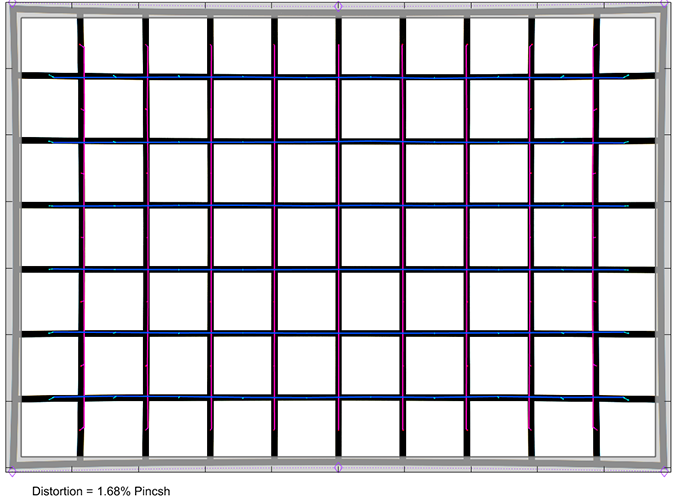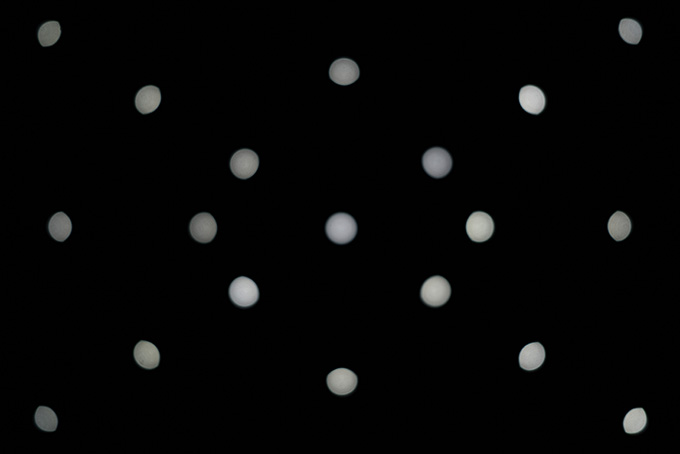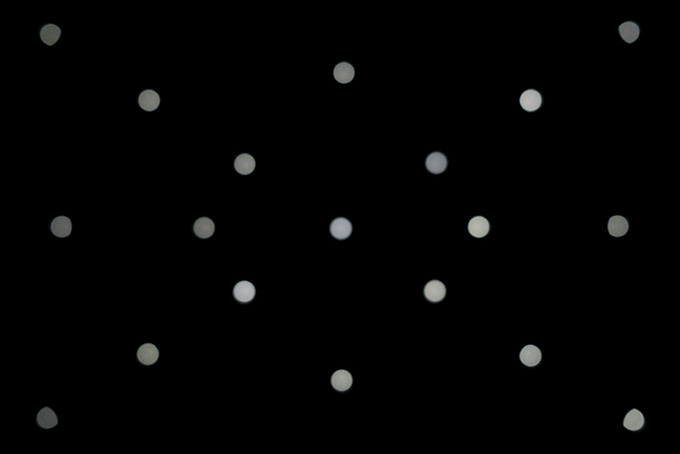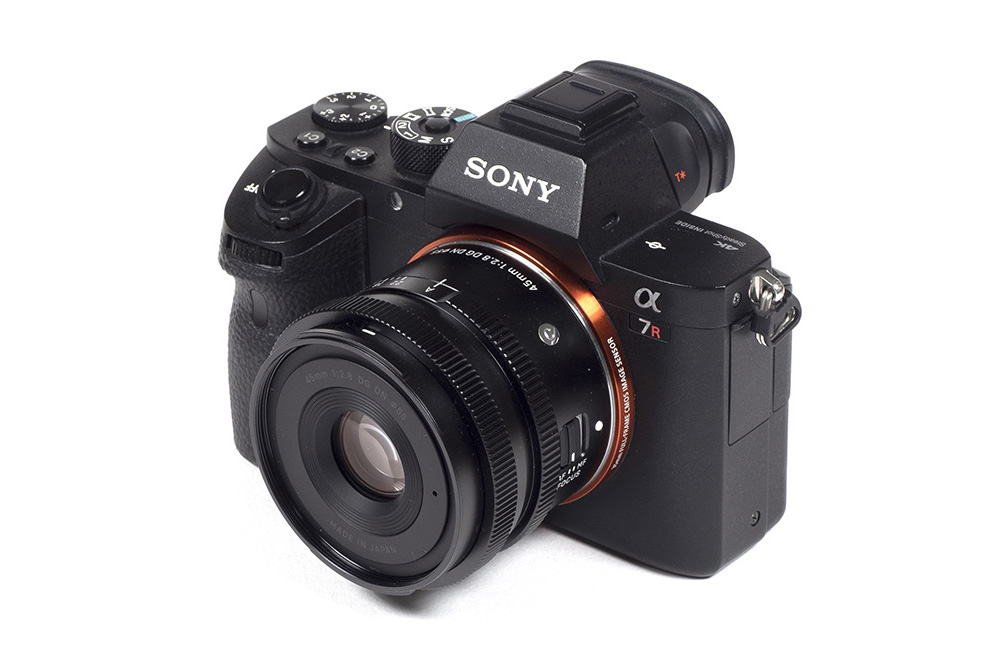by Klaus Schroiff, published September 2019
Introduction
While Sony E-mount lenses are nothing new for Sigma, it took them quite a while to design native full-format lenses – as opposed to the rather 2nd-class approach of converting some of their DSLR lenses. However, also thanks to their parallel activities around the L-mount alliance we can expect to see more interesting offerings. One of them is the Sigma 45mm f/2.8 DG DN Contemporary. Some may question the word “interesting” here given the slow speed for such a standard prime lens but it is actually quite unique in a couple of aspects. The rather high price tag of 550USD/EUR may give you a hint already.
One of the misconceptions around this lens relates to the somewhat strange “Contemporary” classification by Sigma. According to their definition, these lenses are targeting the broader market – balancing price and quality. However, the build quality of this lens speaks a very different language. Of course, a 45mm f/2.8 lens is fairly small and simple to start with but it’s among the highest quality constructions that we have seen here – exceeding the already high quality of Sigma ART lenses actually. The all-metal lens body may not be all that unusual but it features a dedicated aperture ring which we’ve only seen on a handful of Sony E-mount lenses so far (like on the Zeiss FE 35mm f/1.4 ZA). Furthermore, the focus ring operates as smooth as silk with a dampened touch like in high-quality manual focus lenses. Another design feature is the fluted, metal lens hood. While the lens is not fully weather-sealed, it does at least offer a dust/splash-proof mount.

The AF is pretty fast and near-silent. Focusing works “by-wire” albeit you only notice this due to the lack of a focus distance indicator on the lens. Needless to say but the Sigma 45mm f/2.8 DG DN Contemporary is compatible with Sony’s digital auto-correction as well as OSS. It does not feature in-lens stabilization though.
| Specifications | |
|---|---|
| Optical construction | 8 elements in 7 groups inc. 2x aspherical elements |
| Number of aperture blades | 7 (rounded) |
| min. focus distance | 0.24m (max. magnification 1:4) |
| Dimensions | 64×46.2mm |
| Weight | 215g |
| Filter size | 55mm |
| Hood | barrel-shaped (bayonet mount, supplied) |
| Other features | Aperture ring, dust and moisture resistant mount |
| Mount | Sony FE |
Distortion
Standard prime lenses tend to show minimal distortions if any. However, in its native design, the Sigma 45mm f/2.8 DG DN Contemporary produces a medium pincushion distortion (~1.7%) thus more than usual in this class. With activated image auto-correction this is, of course, a lesser concern so most users don’t need to bother with this aspect.


Vignetting
Image auto-correction also comes handy with respect to vignetting. The RAW images reveal a light fall-off of ~2.4EV (f-stops) at f/2.8 which rather high for such a lens. You have to stop down to f/5.6, better f/8 to reduce the issue to a reasonable degree. Image auto-correction reduces the light falloff substantially by almost 1 1/2 f-stops at fully-open aperture. This is still visible albeit usually not disturbing anymore. Stopping down improves this further, of course.

MTF (resolution)
The Sigma lens is already pretty sharp across the frame at f/2.8 albeit it doesn’t bite yet. The center does bite – hard – at f/4 and f/5.6 and the outer image region is very good indeed at these settings. The center quality suffers from diffraction effects from f/8 onward. However, the resolution is still very high across the image frame at f/11. Image softening is more pronounced at f/16, of course.
The field curvature is minimal. The centering quality of the tested sample was very good.
Please note that the MTF results are not directly comparable across the different systems!
Below is a simplified summary of the formal findings. The chart shows line widths per picture height (LW/PH) which can be taken as a measure for sharpness. If you want to know more about the MTF50 figures you may check out the corresponding Imatest Explanations

Chromatic Aberrations (CAs)
Once again – on Sony cameras, you don’t really have to worry about chromatic aberrations due to image auto-correction. However, even if you prefer to disable this for whatever reason, the CAs are low at around 0.5px on the average at the image borders.

Bokeh
The most controversial aspect of the Sigma 45mm f/2.8 DG DN Contemporary is the comparatively small max. aperture. This is limiting its shallow depth-of-field potential. However, at closer focus distances, you can still produce a decent amount of out-fo-focus blur.
The quality of the bokeh (=the blur in the focus transition zone) is good in the background (shown to the left below). It’s not perfectly symmetrical but pretty smooth. The foreground blur (to the right) is somewhat “harder” without being nervous though.

Out-of-focus highlights are rendered nicely. The inner zone of the discs isn’t perfectly even (probably due to aspherical elements) but the typical “onion rings” aren’t too pronounced. The circular aperture shape remains intact and edgy traces do only show up from f/5.6.

The circular shape of the highlights deteriorates the more you move to the corners but it’s not that pronounced on the Sigma lens. Namely, there are no “cat eyes”. Stopping down improves the highlights in the broader center zone but they are not ideal in the corners at f/4. At f/5.6 the highlight discs are pretty good across the image frame.



Sample Images
Competition
There are probably two lenses that are more or less directly competing with the Sigma 45mm f/2.8 DG DN Contemporary (to the left with attached lens hood) – the Sony/Zeiss Sonnar T* FE 35mm f/2.8 ZA (to the right) and the Samyang AF 45mm f/1.8 FE (center). The Zeiss lens is smaller still and a bit wider if you prefer that. Optically they are in a similar ballpark. Another new kid on the block is the Samyang lens. We haven’t tested it yet but it seems to be pretty decent. Don’t expect that the build quality comes close to the Sigma but it does have the advantage of having an extra stop(+) in speed and it’s more affordable, too.

Visual comparison courtesy of camerasize.com.
There are probably two camps of people out there when it comes to the Sigma 45mm f/2.8 DG DN Contemporary. One camp is surely asking what the fuzz is all about - after all it's a comparatively slow speed and expensive lens - whereas the other camp is rather enthusiastic about it because the lens combines high product quality in a low-profile package - perfectly aligned to street photography for instance. In terms of optical performance, the results are pretty impressive. The center quality is very sharp at f/2.8 and the outer image field is pretty good, too. Stopped down to medium aperture settings, the center reaches superb levels and the border/corners improve to very good quality. Lateral CAs are quite negligible. However, the native vignetting, as well as image distortion, are relatively high for such a lens but then Sony's image auto-correction will take care of this. The technical quality of the bokeh is decent albeit not perfect.
The mechanical quality of the lens is nothing short of outstanding and it puts much higher priced offerings to shame. The all-metal construction looks and feels great. And how often do we see a metal lens hood - and this one isn't just a smooth barrel but a fluted one. The damped(!) focus ring, as well as the addition of an aperture ring, is also something special. If you are nit-picky you may criticize the partial weather-sealing. The AF is fast and silent.
The biggest flaw of the lens doesn't relate to its characteristic but to its name - it is just no "Contemporary" lens. It is ARTier than some designated ART lenses in Sigma's lineup for sure (BTW, ART is not about speed only - e.g. the Sigma 30mm f/2.8 DN ART is/was just as fast). So regarding the "love it" or "hate it" group question, yours truly is certainly in the first group - thus highly recommended! Your mileage may vary though.
-
Optical Quality
-
Build Quality
-
Price / Performance


